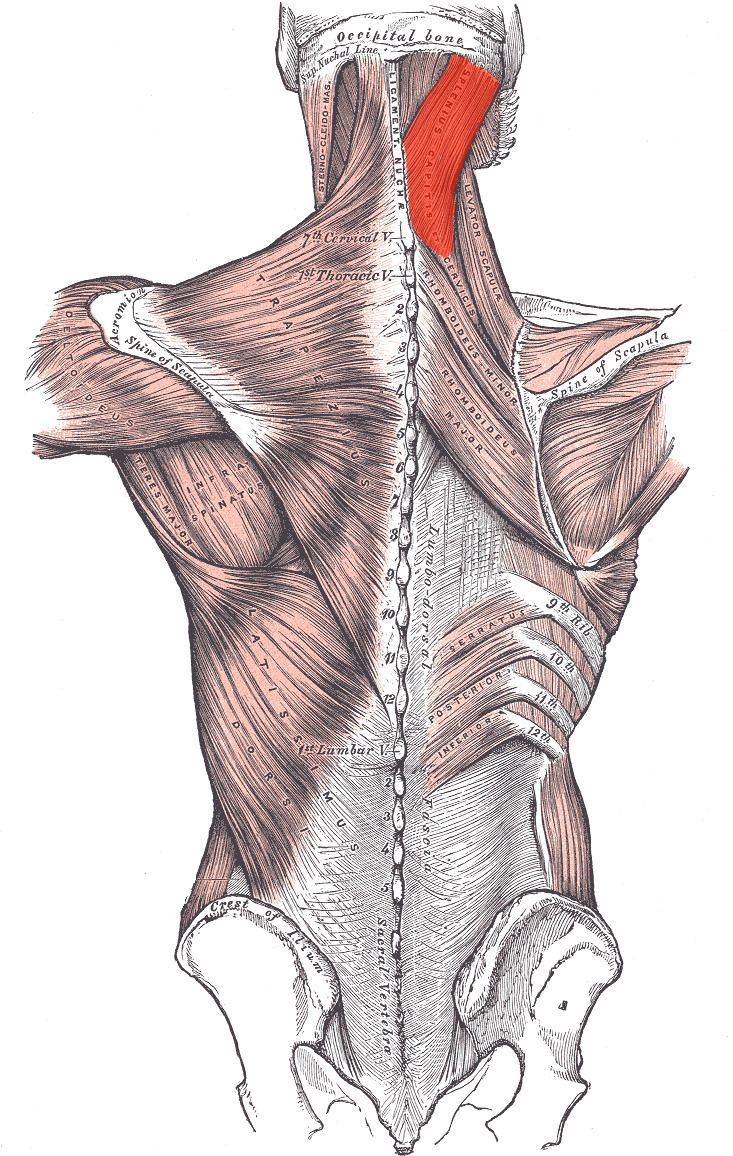 | ||
Nerve Posterior ramus of spinal nerves C3 and C4 Actions Extend, rotate, and laterally flex the head Latin Musculus splenius capitis | ||
The splenius capitis (/ˈspliːni.əs ˈkæpᵻtᵻs/) (from Greek spléníon, meaning 'bandage', and Latin caput, meaning 'head') is a broad, straplike muscle in the back of the neck. It pulls on the base of the skull from the vertebrae in the neck and upper thorax. It is involved in movements such as shaking the head.
Contents
Structure
It arises from the lower half of the nuchal ligament, from the spinous process of the seventh cervical vertebra, and from the spinous processes of the upper three or four thoracic vertebrae.
The fibers of the muscle are directed upward and laterally and are inserted, under cover of the sternocleidomastoideus, into the mastoid process of the temporal bone, and into the rough surface on the occipital bone just below the lateral third of the superior nuchal line. The splenius capitis is deep to sternocleidomastoideus at the mastoid process, and to the trapezius for its lower portion. It is one of the muscles that forms the floor of the posterior triangle of the neck.
The splenius capitis muscle is innervated by the posterior ramus of spinal nerves C3 and C4.
Function
The splenius capitis muscle is a prime mover for head extension. The splenius capitis can also allow lateral flexion and rotation of the cervical spine.
